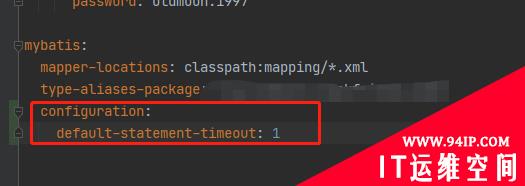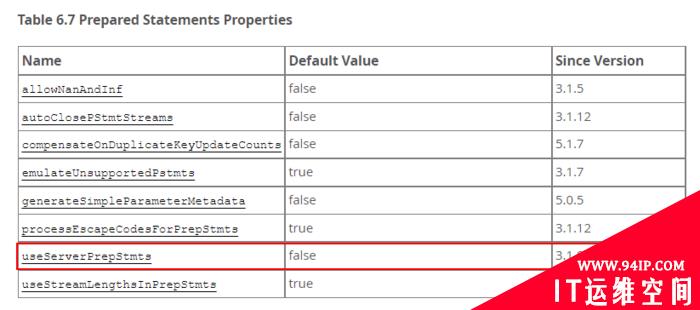一、PL/SQL简介
1、概念:PL/SQL是Oracle在标准SQL语言上的过程性扩展。
2、优点和特性
- 提高应用程序的运行性能
- 提供模块化的程序设计功能
- 允许定义标示符
- 具有过程语言控制结构
- 具备良好的兼容性
- 处理运行错误
二、PL/SQL语言基础
1、编写PL/SQL应用程序时,只能嵌入select语句、DML语句和事务控制语句,不能嵌入DDL语句,DCL语句。
2、PL/SQL块
基本结构如下所示:
1 declare
2 /*定义部分-变量、常量、游标、异常、例解*/
3 begin
4 /*执行部分-PL/SQL,SQL 语句*/
5 exception
6 /*异常处理部分-处理运行错误*/
7 end;//块结束标志3、PL/SQL数据类型(常用)
- 标量类型(常用char,varchar2,number,date,timestamp,boolean)
- 属性类型(常用%type,%rowtype)
- 其他record,table,varray
4、注释:”–“单行注释,”/*…*/”多行注释
三、PL/SQL控制结构
1、条件分支语句
用法如下所示:
1 --示例一
2 declare
3 v_sal number(6,2);
4 begin
5 select sal into v_sal from scott.emp where ename=trim('&ename');
6 if v_sal<2000 then
7 update scott.emp set sal=v_sal+200 where ename=trim('&ename');
8 end if;
9 end;
10
11 --示例二
12 declare
13 v_dep number(6,2);
14 v_sal number(6,2);
15 begin
16 select deptno,sal into v_dep,v_sal from scott.emp where ename=trim('&ename');
17 if v_dep=10 then
18 update scott.emp set sal=v_sal+200 where deptno=10;
19 elsif v_dep=20 then
20 update scott.emp set sal=v_sal+100 where deptno=20;
21 else
22 update scott.emp set sal=v_sal+50 where deptno!=10 and deptno!=20;
23 end if;
24 end;2、case语句
具体用法如下所示:
1 --示例一
2 declare
3 v_deptno scott.emp.deptno%type;
4 begin
5 v_deptno:=&deptno;
6 case v_deptno
7 when 10 then
8 update scott.emp set comm=100 where deptno=v_deptno;
9 when 20 then
10 update scott.emp set comm=80 where deptno=v_deptno;
11 when 30 then
12 update scott.emp set comm=60 where deptno=v_deptno;
13 else
14 dbms_output.put_line('该部门不存在!');
15 end case;
16 end;
17
18 --示例二
19 declare
20 v_sal scott.emp.sal%type;
21 v_ename scott.emp.ename%type;
22 begin
23 select ename,sal into v_ename,v_sal from scott.emp where empno=&empno;
24 case
25 when v_sal<2000 then
26 update scott.emp set comm=100 where ename=v_ename;
27 when v_sal<3000 then
28 update scott.emp set comm=80 where ename=v_ename;
29 when v_sal<4000 then
30 update scott.emp set comm=50 where ename=v_ename;
31 end case;
32 end;
3、循环语句
具体用法如下所示:
1 --基本循环
2 declare
3 i int:=1;
4 begin
5 loop
6 dbms_output .put_line(i);
7 i:=i+1;
8 exit when i=10;
9 end loop;
10 end;
11
12--while循环
13 declare
14 i int:=1;
15 begin
16 while i<=10 loop
17 dbms_output.put_line(i);
18 i:=i+1;
19 end loop;
20 end;
21
22--for循环
23 declare 25 begin
26 for i in 1..10 loop
27 dbms_output.put_line(i);
28 end loop;
29 end;四、异常处理
1、分类:预定义异常,非预定义异常,自定义异常
2、常见预定义异常
- case_not_found:when子句中没包含必须的条件分支,又无else子句时触发。
- cursor_already_open:打开已打开的游标时触发。
- invalid_number:字符转换为数字失败时触发。
- too_many_rows:执行select into 子句时,返回超过一行触发。
- zero_divide:除数为0时触发。
- no_data_found:执行select into未返回行,或者引用了索引表未初始化元素时触发。
具体用法如下所示:
1 --预定义异常处理
2 eclare
3 v_ename scott.emp.ename%type;
4 begin
5 select ename into v_ename from scott.emp where empno=&empno;
6 dbms_output.put_line(v_ename);
7 exception
8 when no_data_found then
9 dbms_output.put_line('员工号不存在');
10 end;
11
12 --自定义异常处理
13 declare
14 e_integerity exception;--定义非预定义异常
15 e_no_employee exception;--定义自定义异常
16 pragma exception_init(e_integerity,-2291);--关联非预定义异常
17 begin
18 update scott.emp set deptno=40 where empno=-1;
19 if sql%notfound then
20 raise e_no_employee;--显示触发自定义异常
21 end if;
22 exception
23 when e_integerity then
24 dbms_output.put_line('该部门不存在!');
25 when e_no_employee then
26 dbms_output.put_line('该员工不存在!');
27 end;
五、游标(处理select语句返回的多行数据)
(1)显示游标(查询结构超过一行)在PL/SQL块的声明部分申明,在执行部分或异常处理部分打开游标,提取数据,关闭游标。
1、定义游标(declare cursor cursor_name is select_statement;)
2、打开游标(open cursor_name;)
3、提取数据
1 --每次提取一行
2 fetch cursot_name into variable1,variable2,..--variable :接收游标数据的变量
3--每次提取多行
4 .或 fetch cursor_name into bulk collect into collect1,collect2...--collect :接收游标结果的集合变量
4、关闭游标(close cursor_name;)
5、显示游标属性
- %isopen:判断游标是否打开,打开返回true,否则false;
- %found:是否从结果集中提取了数据。提取了数据返回true,否则false;
- %not found:与%found相反;
- rowcount:当前行数;
具体用法如下所示:
1 declare
2 cursor emp_cursor
3 is
4 select ename,sal from scott.emp where deptno=20;
5 v_ename scott.emp.ename%type;
6 v_sal scott.emp.sal%type;
7 begin
8 open emp_cursor;
9 loop
10 fetch emp_cursor into v_ename,v_sal;
11 exit when emp_cursor%notfound;
12 dbms_output.put_line(v_ename||':'||v_sal);
13 end loop;
14 close emp_cursor;
15 end;
16
17 --参数游标
18 declare
19 cursor emp_cursor(cno number)
20 is
21 select ename,sal from scott.emp where deptno=cno;
22 v_ename scott.emp.ename%type;
23 v_sal scott.emp.sal%type;
24 begin
25 if not emp_cursor%isopen then
26
27 open emp_cursor(10);
28 end if;
29 loop
30 fetch emp_cursor into v_ename,v_sal;
31 exit when emp_cursor%notfound;
32 dbms_output.put_line(v_ename||':'||v_sal);
33 end loop;
34 close emp_cursor;
35 end;
36
37 --使用游标更新或删除数据
38 declare
39 cursor emp_cursor
40 is
41 select ename,sal from scott.emp for update of sal;--在sal列上加上共享锁
42 v_ename scott.emp.ename%type;
43 v_sal scott.emp.sal%type;
44 begin
45 open emp_cursor;
46 loop
47 fetch emp_cursor into v_ename,v_sal;
48 exit when emp_cursor%notfound;
49 if v_sal<2500 then
50 update scott.emp set sal=sal+150 where current of emp_cursor;
51 end if;
52 end loop;
53 close emp_cursor;
54 end;
55 --游标的for循环语法
56 for record_name in curso_name loop
57 statement1;
58 statement2;
59 ...
60 end loop; --record_name:Oracle 隐式定义的记录变量名
61 --游标的for循环
62 declare
63 cursor emp_cursor
64 is select ename from scott.emp where deptno=20;
65 begin
66 for o in emp_cursor loop
67 dbms_output.put_line('第'||emp_cursor%rowcount ||'员工'||o.ename);
68 end loop;
69 end;
70
71
72 --不使用游标属性的for循环
73 begin
74 for o in (select ename from scott.emp where deptno=20)
75 loop
76 dbms_output.put_line(o.ename);
77 end loop;
78 end;
79
80 select * from scott.emp;
转载请注明:IT运维空间 » 运维工具 » Oracle PL/SQL编程



















发表评论